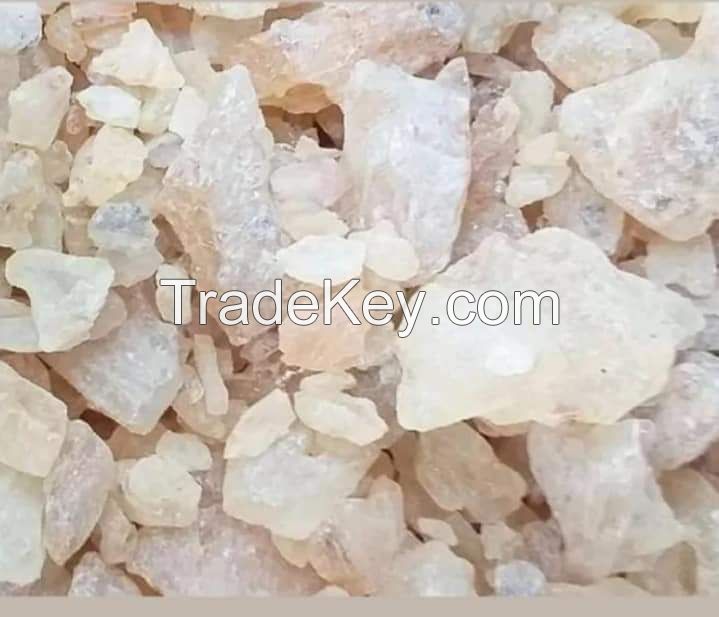Description
Gum copal is a resin produced by the sap of the forest tree
(Daniellia sp.), due to common impurities and differences in
regions, gum copal ranges in colors from blacks to yellows to
whites. Gum copal is usually only ****1,**0 years old and it has
not yet fossilized. Gum copal is a semi-fossilized, amorphous resin
which has a unique set of properties such as resistance to water,
solubility in alcohols, and has the ability to give glossy
finishing along with possessing superior binding abilities.
Usage:
Gum copal has a very wide variety of uses in both past and
present times. Primarily used as an incense by ancient
civilizations, it also found usage as an early form of glue, and
traditional medicine for cases such as dysentery, stomach pains,
dizziness and fright. Today it still finds popular usage as an
incense. In addition, it finds a niche as being a varnish or
waterproofing material (as when it is heated with certain oils, it
becomes nearly transparent). It also can be used as ingredients for
adhesives, perfumes, printing ink, paints and films.
Qualities Grade
PWS- This is the highest grade for gum copal, white in color
and *****0% purity, it is used for making varnish specifically for
wood surfaces. Its result is very good luster and very good in
resisting external scratches. Plus it dries to a hard and shiny
film.
DBB- This grade is pebble sized and whitish yellow in color
with about ****5% purity. This is an economy grade and ideal for
production of low end varnishes, its solubility is good. It can
contain some black copal but it is still perfectly and easily
dissolved in alcohol solvent mixtures. It is also the most common
use for incense.
WS- The lowest grade for gum copal with larger chunks and
black in color with about *0% purity, the impurities include
treebark and soil.
Powder- The is the leftovers from the processing of PWS and
DBB, usually used for varnish.
